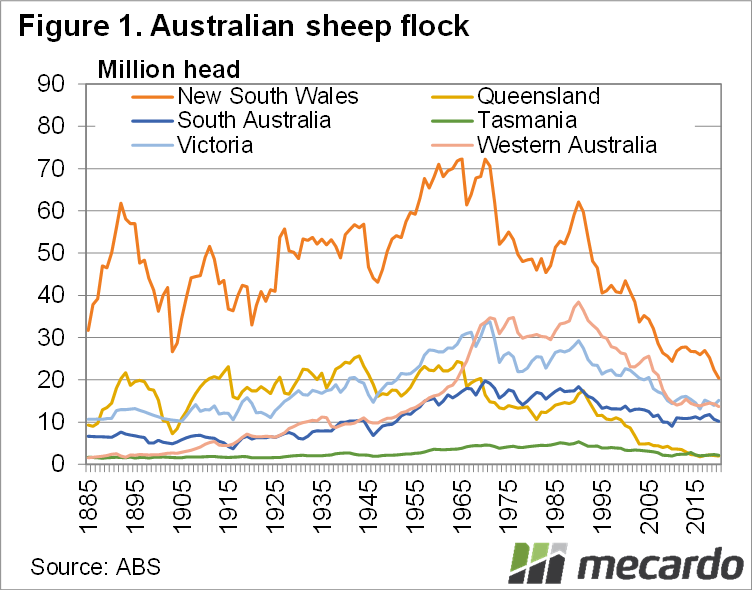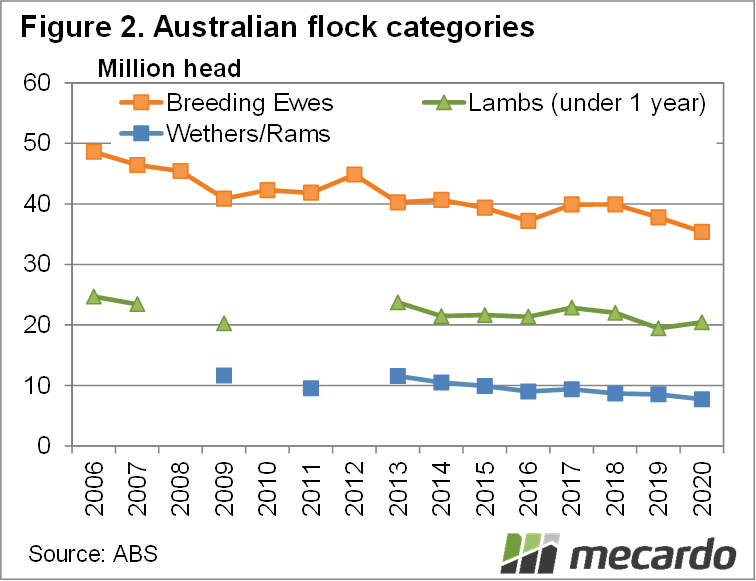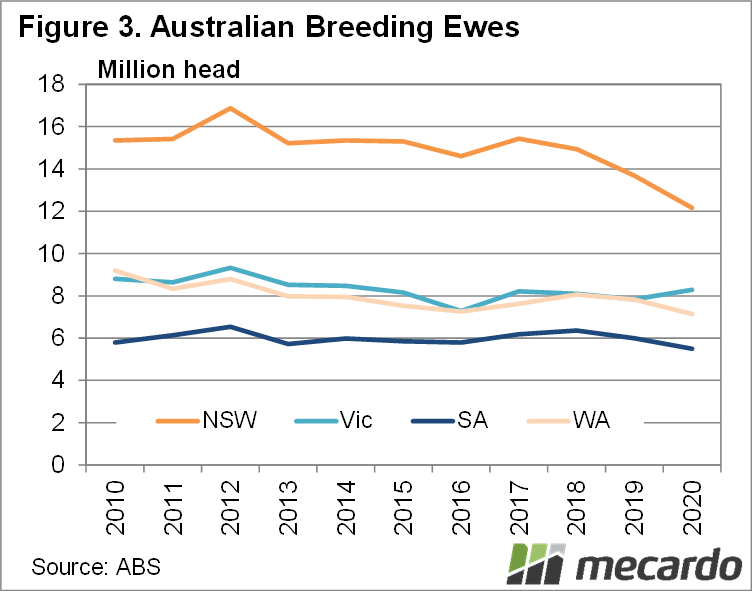Many farmers will have recently received their annual Australian Bureau of Statistics (ABS) survey for the 2020/21 statistics. The 2019/20 stats were quietly released in May, and despite the data being a year out of date, it’s worth taking a look.
The ABS data goes all the way back to 1885, figure 1 shows that NSW hit another new flock low at the end of June 2020. The 20.4 million head is a dramatic decline in the flock, with the last 5 million head fall due to the drought.
The national sheep flock fell 3% in the year to the end of June, with NSW down 9%, being the main driver. Victoria was the only state to post an increase in the flock in 2019/20, gaining 2.2 million, or 9%.
It’s strange to think Victoria and WA have had similar-sized flocks for the last 10 years, but the WA fall put it 1.5 million head behind at the end of June last year. The fall in WA took the western flock to the lowest level since the 1950s.
The ABS are still reporting on total breeding ewe numbers, lamb numbers and ‘other’ sheep, which are largely wethers and rams. The ewes are no longer split into merino and other breeds, for that we now have to rely on Meat and Livestock Australia (MLA) survey data.
Figure 2 shows that breeding ewe and other sheep numbers were down 3.3% at the end of June 2019/20, with the fall taking numbers to 35.36 million head. The number of lambs on hand was up 5% year-on-year, as young ewes were held to kickstart the flock rebuild.
Of the extra 990,000 extra lambs on hand, 690,000 were in Victoria. Despite the fall in the breeding ewe flocks in other states, the number of lambs on hand were largely steady, again, pointing to young sheep driving the increase in the flock.
The state breeding ewe numbers are unsurprisingly similar to total flock numbers. The decline in NSW being the main driver in lower total numbers.
What does it mean?
We know the flock is in a rebuild phase, with a strong turnaround expected over the coming year. We can see from the 2019/20 flock numbers however, that the flock is coming from a record low base, so it might take some time to return to the levels of just 3 years ago.
Victoria has a head start on the flock rebuild, having started in 2019/20, and we can likely expect similar rates of increase over the coming year for the rest of the country.
Have any questions or comments?
Key Points
- The ABS sheep and lamb numbers show NSW at its lowest level on record.
- Victoria was the only state to record an increase in its flock in 2019/20.
- The increase in lambs on hand points towards the beginning of the flock rebuild.
Click on figure to expand
Click on figure to expand
Click on figure to expand
Data sources: ABS, Mecardo















